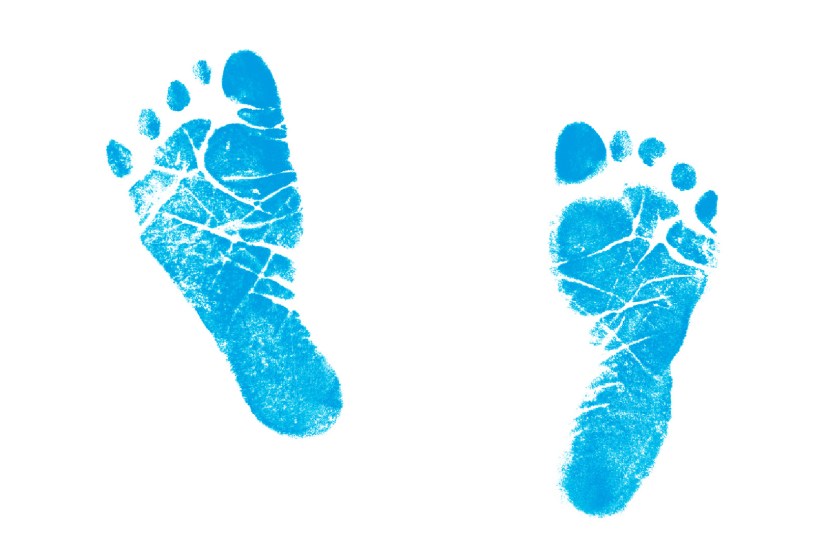I’ve always wanted children. Friends sometimes tease me about my broodiness, apparently uncommon among single 29-year-old men. But unless I’ve accidentally knocked someone up in the past few months, I’m going to be an older parent than mine were by the time they had me. I suppose that’s normal. The average age at which couples start a family has risen consistently since the mid-1970s.
I’m told not to worry: look at Mick Jagger, whose youngest child was born when he was 73. Men don’t suffer from the same biological restraints as women. One acquaintance insists rather admirably that she’s going to have children by 25, regardless of the consequences. She also insisted on smelling me to test my pheromones and, therefore, our compatibility.
Even without the sniffing, she’s an unusual young professional. Our cohort tends to have children later, if at all. Every university friend bar one has chosen to focus on their career rather than having kids. Child-rearing is seen as something done by grown-ups; my friends and I, on the cusp of our thirties and still living in shared rentals, do not feel like adults.
In 2020, more than half of British women were childless by the time they reached their 30th birthday, a demographic first. Perhaps that’s why Superdrug reported this week that sales of its at-home fertility tests have tripled since December.
Aware of my desire for children, a colleague decided to send me to the Fertility Show, held at Olympia London. It’s a trade fair for those finding it hard to conceive, where teal seems to be the unofficial colour of reproduction. IVF clinicians, donor agency workers and even nutritionists stood in front of teal hoardings handing out teal pens. They sat on teal sofas chatting through fertility plans with women in white, teal-inflected trainers. Even the carpet was teal.
There was something of a let’s-see-what-sticks mentality to the jumble of exhibitors. Next to one urologist discussing sperm motility was a team of enterprising hippies hawking courses in yogic conception. A ‘wellness workshop’ had been set up in the middle of the hall, decked out in fairy lights and diaphanous white wall hangings, where I watched women on all fours wiggling their hips. Someone mentioned that gel-filled boxer shorts were on sale, designed for men who fret about the temperature of their tackle, but I was unable to source a pair.
Problems with male fertility, it turns out, are just as common as female reproductive issues, although the show felt heavily weighted towards women. The session on sperm counts and lifestyle was so oversubscribed that couples jostled for space at the back of the room. Concerned men asked whether excessive cycling or trips to the sauna were obstructing their chances of having children. One man helpfully recommended a specially designed testicle-preserving bike saddle that looks like a ‘split burger bun’.
I’d imagined the Fertility Show might be a sad affair, filled with desperate women pleading with professionals for help. There was a bit of that. But the overwhelming feeling was one of choreographed hope. Stump up the cash, the message seemed to be, and a healthy, happy baby will be yours. No mention of the fact that for a 40-year-old woman, the chance of a successful round of IVF is one in ten.
On stage, the ethics of medically assisted parenthood were either ignored or treated with derision. During a discussion about surrogacy, one speaker complained of ‘all these new, in inverted commas, women’s rights groups’ talking of ‘babies being ripped from their mother’s arms’ – as though there isn’t something faintly concerning about rich couples rocking up in Thailand and paying a teenager a few thousand dollars for the use of her womb. During the same session, we were told that one upside of the war in Ukraine is that ‘the Passport Office has put in special measures’ meaning it’s now much faster for British parents to get their surrogate babies out of the country. Thanks, Vlad.
Still, it’s difficult to comprehend the horror that must come with discovering you’ve missed your chance. It’s one of life’s great cruelties. But I worry that medical intervention is sometimes touted as a lifestyle choice rather than a backstop for the unlucky. There are now firms in America that offer employees egg-freezing alongside life insurance and dental care. At the Fertility Show I felt at times as though I was watching the cruel consequences of an unwavering faith in choice. We believe we can simply demand what we want, when we want it. But life doesn’t really work like that.
The biggest growth in surrogacy in the past few years has come from single would-be parents, unable to find the right partner with whom to have children. It feels sad and unnatural to me. Surely this is one of those useful restrictions that biology puts on us: to have a child, you need to be able to convince someone to have one with you. I can already hear critics objecting that plenty of children are raised by single parents. They’re right of course, but I’m sure most single parents would admit that they’d rather there was a partner around.
No one denies the good that techniques such as IVF and surrogacy can do. But in the same way that the Pill led to the sexual revolution, promises of artificially prolonged fertility have changed the way we think about ourselves. Adolescence seems to have extended deep into adulthood. I have friends who’ve gone grey before they found a proper job, let alone a wife.
Children, it seems to me, aren’t just nice to have, another product to post about online. They’re a world-changing imposition. Suddenly there is something infinitely more important than you, rubbing ketchup and fingerpaints into the ruins of what was once your life. Not that I’d know. Rubbish pheromones, apparently.
Got something to add? Join the discussion and comment below.
Get 10 issues for just $10
Subscribe to The Spectator Australia today for the next 10 magazine issues, plus full online access, for just $10.
You might disagree with half of it, but you’ll enjoy reading all of it. Try your first month for free, then just $2 a week for the remainder of your first year.














Comments
Don't miss out
Join the conversation with other Spectator Australia readers. Subscribe to leave a comment.
SUBSCRIBEAlready a subscriber? Log in